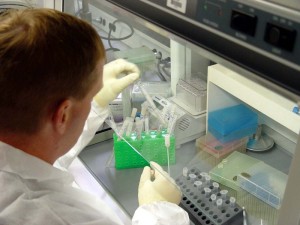 TEHRAN (FNA)- Iranian researchers from Amir Kabir University of Technology in association with Melbourne University, Australia, succeeded in the presentation of a new method to investigate the behavior of implants applied inside human�s body by using nanotechnology.
TEHRAN (FNA)- Iranian researchers from Amir Kabir University of Technology in association with Melbourne University, Australia, succeeded in the presentation of a new method to investigate the behavior of implants applied inside human�s body by using nanotechnology.Implants with longer lifetime and higher quality can be produced by using the tests.
According to Dr. Saber Samandari, common fatigue tests are highly time-consuming, and it is not possible to study the sample under local dynamic load in specific conditions in those tests. However, all possible locations of a sample can be easily investigated in laboratory by using an indenter method at nanometric scale. The new testing method detects faster the crack growth inside the implants in comparison with normal fatigue tests.
�Thermal spraying is one of the most common methods all over the world in order to coat implants. The presence of residual tensions (stress or pressure) in the thermal coating is inevitable. Cracks grow on surface of the coating due to the presence of residual tension stress, which is undesired and harmful. The amount of residual tension can be controlled by changing the type of the implant or by heating the implant during the coating process,� he said.
�Results showed that the heating of metals compatible with body before or during the coating process changes the amount of residual tension in the coating, which changes the resistant of the coating against dynamic load. Results also showed that cobalt alloy coated with hydroxyapatite powder has higher resistance in comparison with other metals against dynamic load, and it is suggested for the thigh or tooth implants,� Dr. Samandari concluded.
The project is currently being developed by a number of researchers from Iran, Australia, Latvia and Turkey.
Results of the research have been published in details in November 2013 in Acta Biomateriala, vol. 9, pp. 5788-5794.
By Fars News Agency�
The Iran Project is not responsible for the content of quoted articles.










